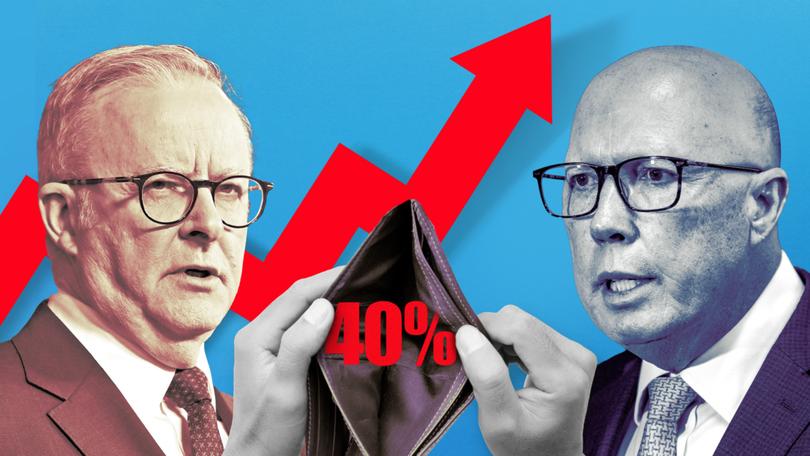JACKSON HEWETT: Why Australia’s cost of living pain will never go away

A quietly depressing statistic, released today by the Australian Bureau of Statistics, reinforced what almost every voter knows in their bones.
The ABS Living Cost Index is not one of those blockbuster releases that gets markets moving, or the Reserve Bank sharpening its pencils. But it does a good job of explaining why so many people continue to ignore what the government says is good news on inflation.
The good news is the Living Cost Index — basically the gamut of costs from food to health to transport and mortgage interest — is moderating.
Sign up to The Nightly's newsletters.
Get the first look at the digital newspaper, curated daily stories and breaking headlines delivered to your inbox.
By continuing you agree to our Terms and Privacy Policy.For pensioners, it even went down 0.1 per cent thanks to energy rebates and rent assistance.
But for working households, “employees” under the ABS guidelines, no such reprieve.
For them costs continue to rise, up four per cent over the year and 0.4 per cent for the quarter.
Take a longer view and it’s clear why there is such frustration in the mortgage belt.
According to the ABS data, living costs for employees have risen 24 per cent since 2020. Wages, as measured by the Wage Price Index, have risen 16 per cent.
Shadow treasurer Angus Taylor seized on the figures today. “Australians’ living standards have fallen more than any of our peer countries over that same comparable period, and the pain is very real,” he said.
It will continue to be the Coalition’s electoral catch-cry, and Treasurer Jim Chalmers will continue to emphasise that Labor understands people are ‘doing it tough’ but the reality is a lot of what is taking place is out the government’s hands.
Mortgages rolling from fixed to variable is one of them.
The ABS revealed that mortgage costs leapt 15 per cent on aggregate over the quarter. Last quarter the rise was nearly 20 per cent.
Even if the Reserve Bank did cut interest rates, as is heavily forecast for later this month, the impact would be mild.
It shows why the mortgage belt will be the battleground in the election. As Demographer Kos Samaras wrote in the Financial Review, traditional Labor voters — the working class and working poor — on the city fringes are seeing their “stable, sufficient incomes erode into precarious work and declining living standards”
The sad news, if you look back over the last twenty years of the index, is that the numbers go backwards only three times — from June to December 2020.
That means that the step change in prices since the pandemic are unlikely to go away, and neither Labor, nor the Coalition, have shown how they will get prices down.
That is why productivity is consistently trotted out as the issue facing the country.
Somehow, the country needs to raise wages without driving inflation higher.
And despite all the talk, Australia’s record on that is dismal, having gone backwards last year, and well below the long-term average.
Productivity is one of those boring words that most people instantly switch off from but it needs to be central if workers are to see their pay catch up to higher expenses.
Otherwise, they will have to wait until someone solves the big ticket issues of education, health and the cost of housing which have made up the majority of the rise in workers’ costs over the last 20 years.

